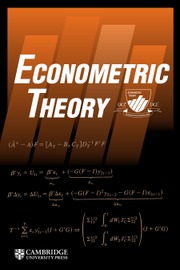No CrossRef data available.
Article contents
ISOTONIC PROPENSITY SCORE MATCHING
Published online by Cambridge University Press: 14 November 2025
Abstract
We propose a one-to-many matching estimator of the average treatment effect based on propensity scores estimated by isotonic regression. This approach is predicated on the assumption of monotonicity in the propensity score function, a condition that can be justified in many economic applications. We show that the nature of the isotonic estimator can help us to fix many problems of existing matching methods, including efficiency, choice of the number of matches, choice of tuning parameters, robustness to propensity score misspecification, and bootstrap validity. As a by-product, a uniformly consistent isotonic estimator is developed for our proposed matching method.
Information
- Type
- ARTICLES
- Information
- Creative Commons
- This is an Open Access article, distributed under the terms of the Creative Commons Attribution licence (https://creativecommons.org/licenses/by/4.0), which permits unrestricted re-use, distribution and reproduction, provided the original article is properly cited.
- Copyright
- © The Author(s), 2025. Published by Cambridge University Press
Footnotes
We are grateful to Markus Frölich, Daniel Gutknecht, Phillip Heiler, Lihua Lei, Yoshi Rai, Christoph Rothe, Carsten Trenkler, and participants at the econometrics seminar at Mannheim 2022, NASMES 2023, and IAAE 2023, for helpful comments and discussions. We also would like to thank a co-editor and anonymous referees for helpful comments to revise the paper.

